This is the weekend edition of TheMarioBlog and will be updated as needed. The next blog post is Monday, June 6, when I will be reporting from Cordoba, Argentina.
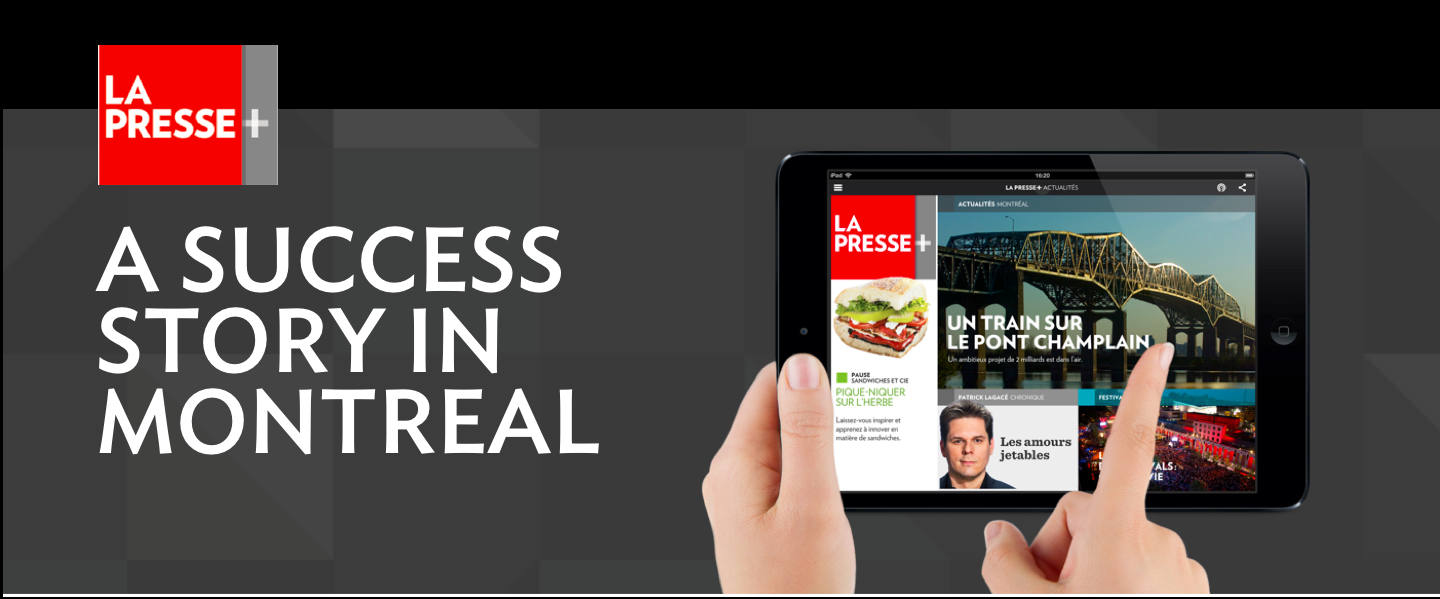
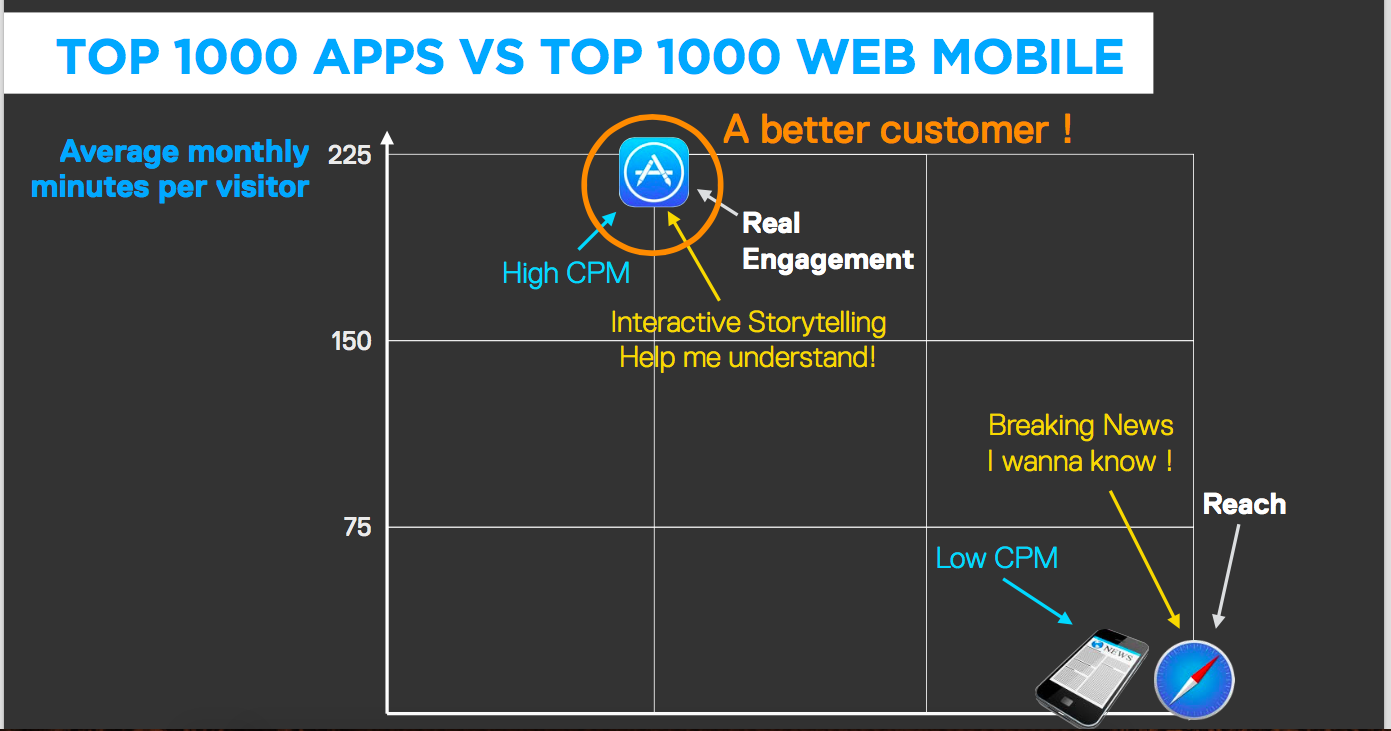
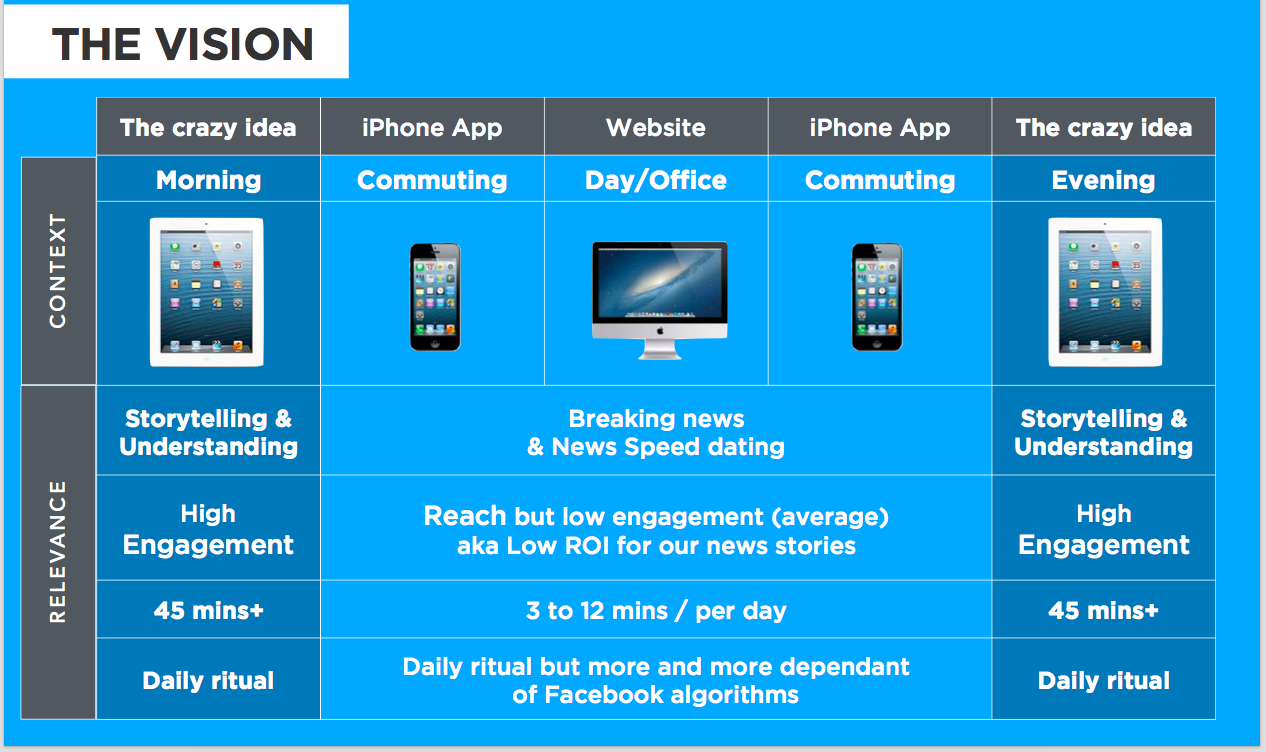
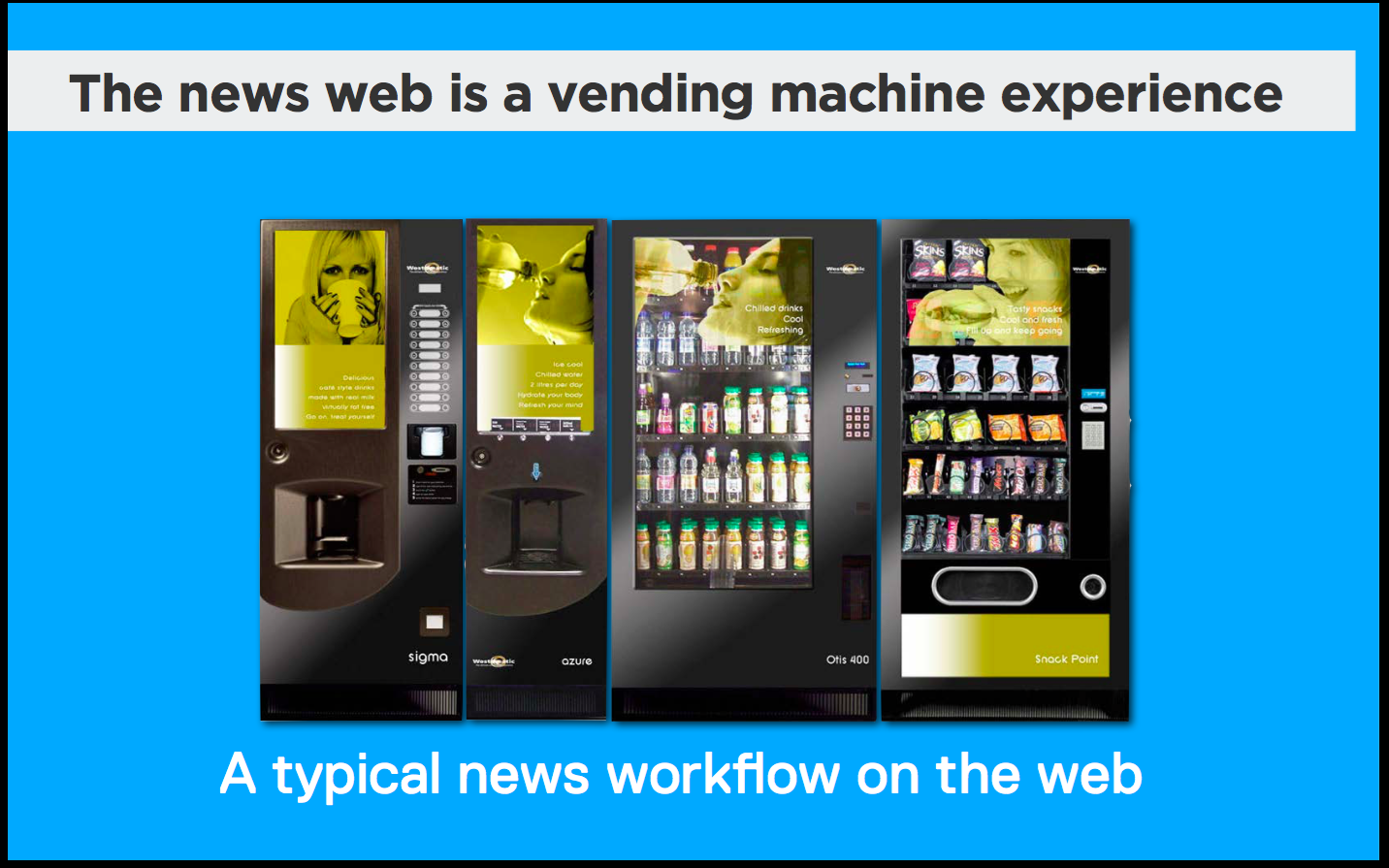
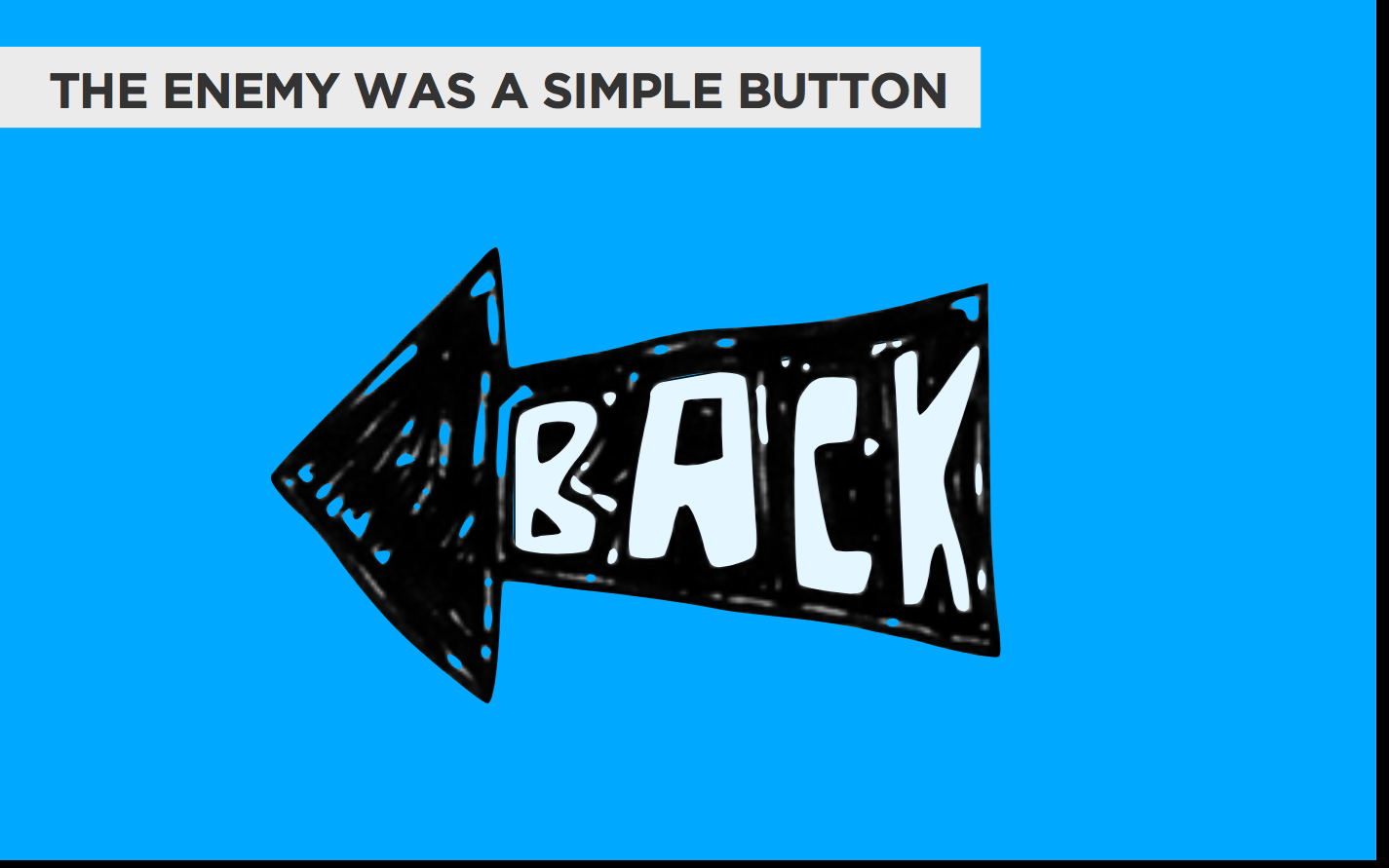
The LaPresse+ technology team compared the traditional news website to a vending machine experience, with the users in and out in 3 minutes.

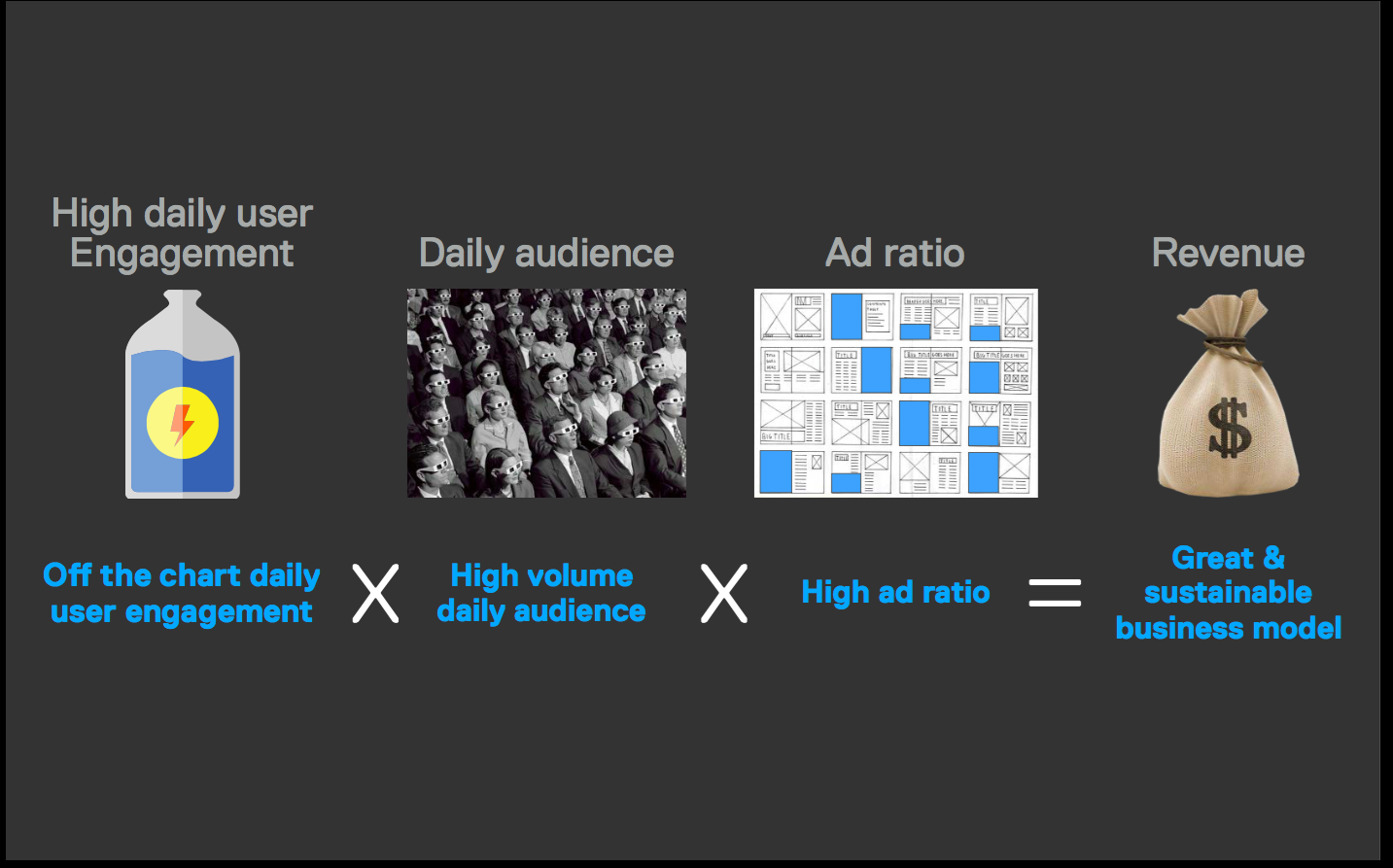
At La Presse+: one story per screen, rich engagement, innovative advertising and good results
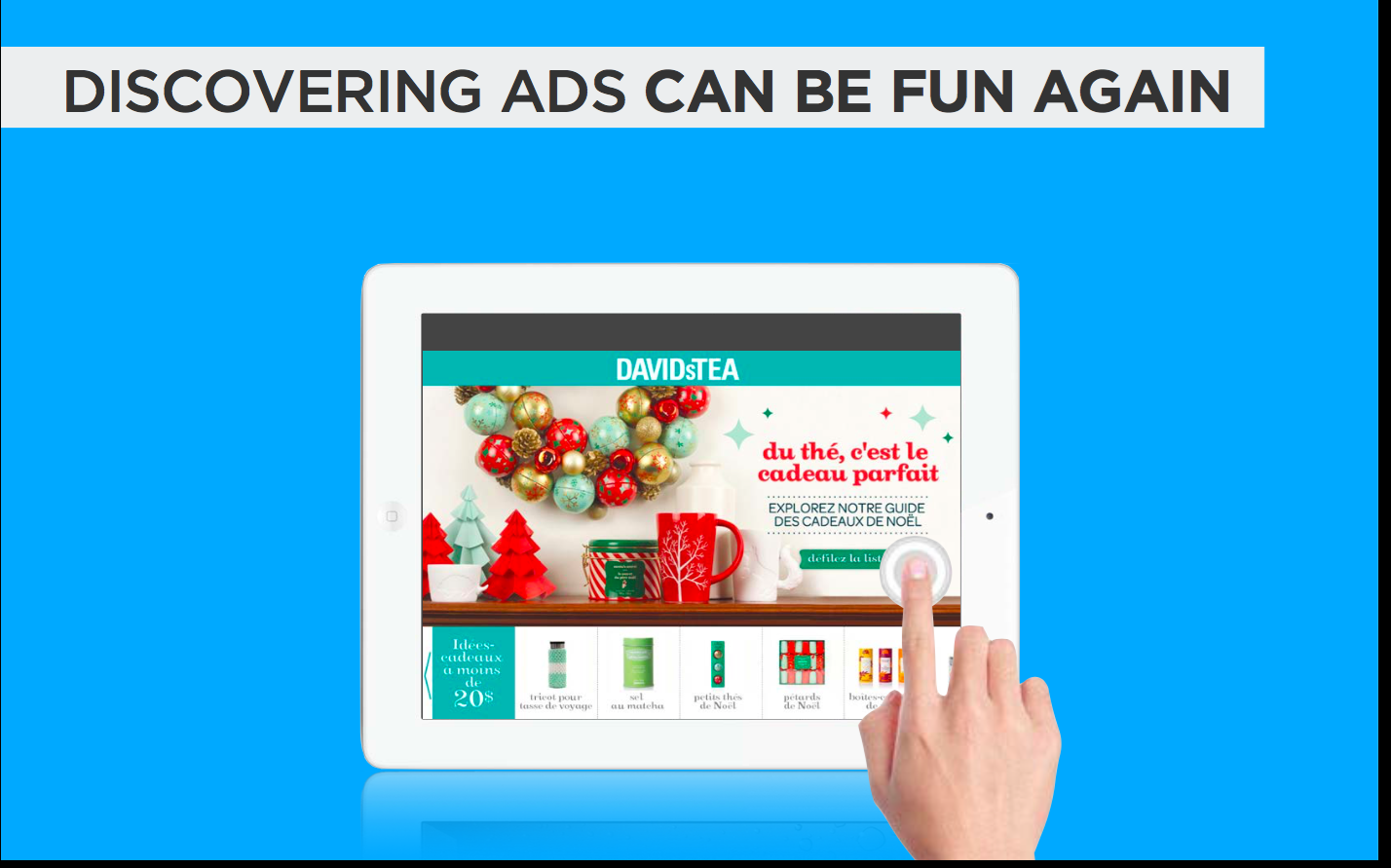
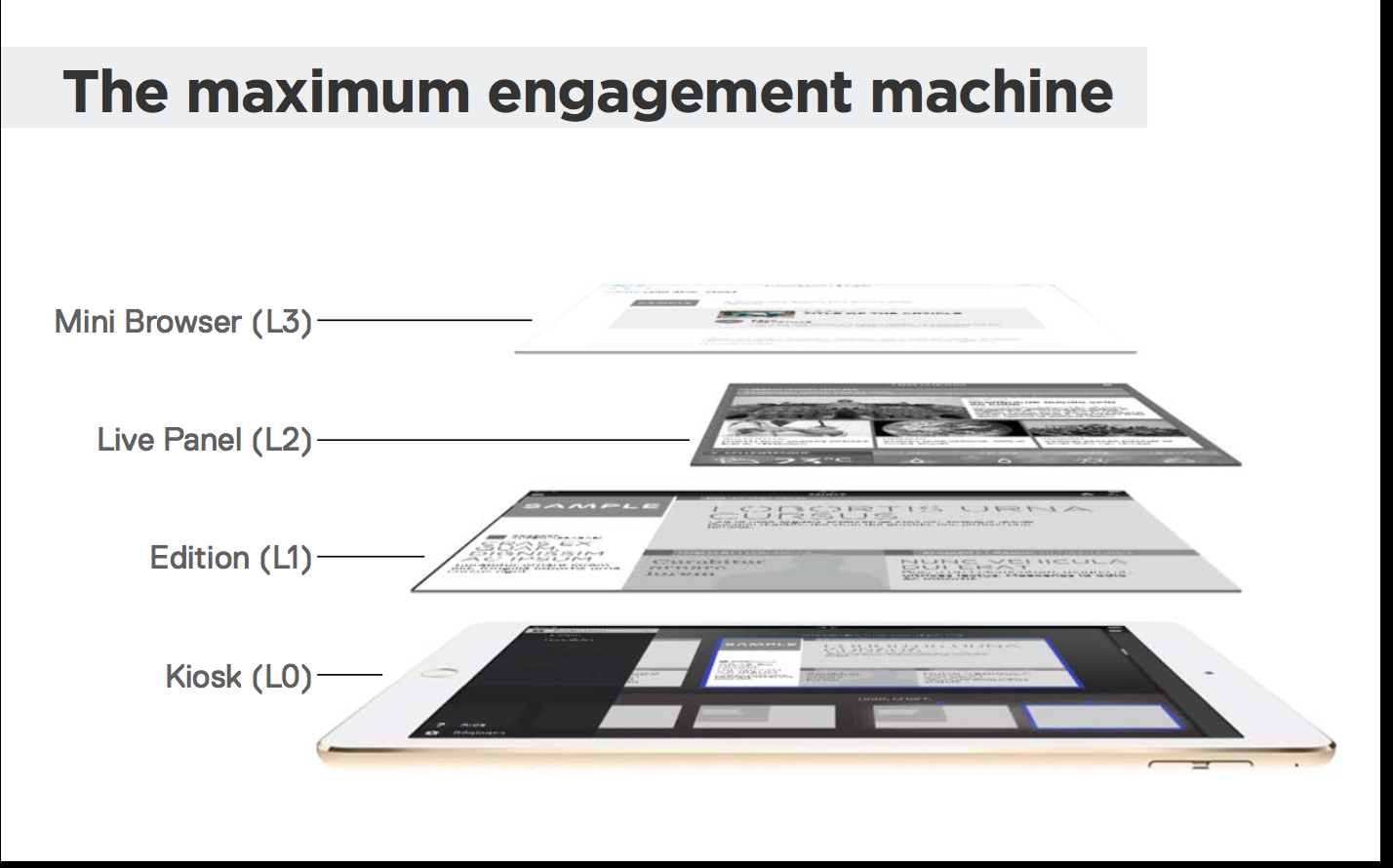
Rich engagement is top priority for La Presse+ team
It was 2010 and Jean-Marc De Jonghe, Vice President for Digital Products, was in a deep dialog with La Presse+ President and Publisher, Guy Crevier, about the future of news media and what it would hold for their company.
These were the facts for their Montreal-based operation:
— With a population of 4 million in the Greater Montreal area, print circulation for La Presse was 200,000 copies on weekdays and monthly web unique visitors of 2.2 million.
—Montreal, like many other markets globally, was crowded and competitive.
–In North America, newspaper advertising was down by 63% in the past five years.
–The average age of a newspaper reader was also increasing, and down 54% among the 25 to 34 age group.
-“We had a conviction that we had to change the business model,” Guy Crevier told me. “As simple as that. We also did not believe in paywalls and needed to attract younger readers and we did not believe that they would pay for a newspaper.”
At the same time, Crevier says he was sure, and still is, that they could not identify a mobile strategy that could generate meaningful revenue opportunity.
So, what were the imperatives when faced with these challenges?
+ Attract large audiences.
+ Attract younger audiences (25-54).
+ Digital & Measurable.
+ Highly Engaging
+ Monetize
.
The goals?
—Exploit fully the potential that the tablet offers and integrate the best features of video, magazines, newspapers and the web, to deliver a news and advertising experience adapted to the new readership habits of consumers 25+.
“In other words, the goal was staying relevant in our customer’s new digital life while keeping the newsroom as impactful in the post-newsprint era as it was in the newsprint era,” according to De Jonghe.
The required action?
La Presse began by prototyping a lot of App ideas until the user testing showed impressive results in the right direction. Then, they mounted a gigantic tablet project and spent $40 million Canadian dollars over 3.5 years including 2 years of research prior to launching to optimize reader engagement with news content and advertising.
What about the technology required?
I spent time talking with Jean-Marc De Jonghe, the man who, with a devoted team of what he describes as “amazing men and women”, developed the technology that makes La Presse+ possible each day. He is an articulate engineering school drop out who works closely with editors and designers in the newsroom to make sure that his team delivers the type of user experience that makes storytelling easier and more engaging.
“By the way, a key differentiator with our app is that it was about destroying walls and silos in our organization. Not a newsroom project per se, but an enterprise project. A lot of stakeholders were involved: sales, ad creation, marketing. We had to work closely with each department to create the product we envisioned with the best possible user experience,” De Jonghe said.
I wanted to know why the La Presse team decided to build this new product and go it alone.
“While reach was good for our egos, engagement is good for our mission and for the business,” De Jonghe writes.
The team at La Presse began with some data to guide their process:
—90% of time spent on mobile is spent in apps, but only 2% on news apps, and 17% on entertainment.
-Nearly 4 out of 5 smartphone app minutes are spent on the individual’s Top 3 apps, despite the average smartphone user visiting 25 apps per month. Tablet users are even more engaged with their top apps, with 87% of their app usage occurring on their Top 3.
“So, we asked ourselves, how can we move the 2% of news to the front, to that 19% spent on Facebook, and 17% on Entertainment,” De Jonghe’s team pondered. “So our goal had to be to create a product which allowed us to compete for time spent and to make money.”
This is the moment at which the La Presse team sees an opportunity for a high engagement news app. And the team saw the tablet as the ideal platform.
“The tablet has grown entirely under the shadow of the smartphone,” says De Jonghe. “You have to look at the daily usage and penetration to understand the tablets, not the sales.”
The tablet is NOT dead
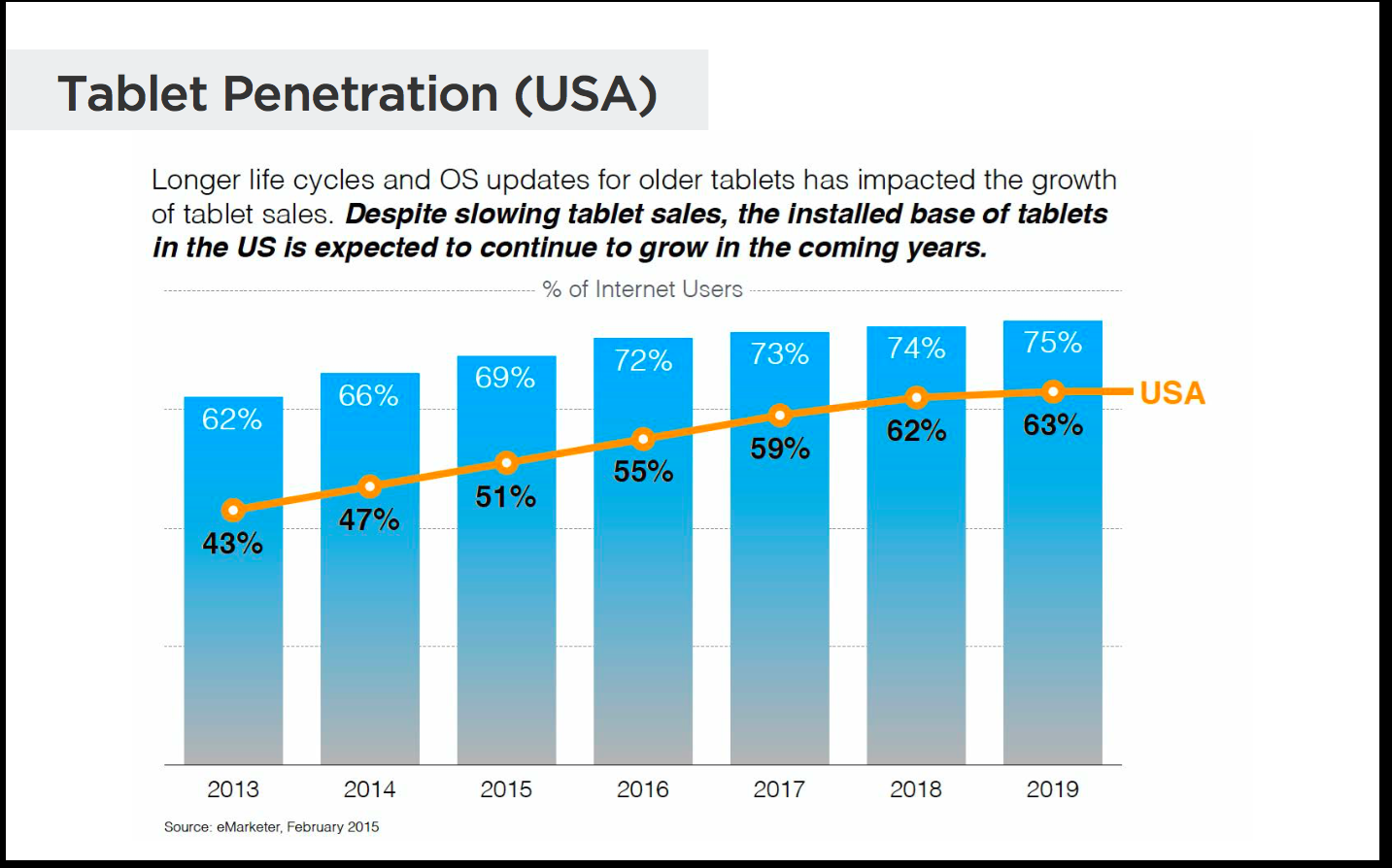
I found this to be an interesting remark, since for many publishers today the tablet, and, particularly, the iPad are not as popular and many even question its viability for the publishing business. If you engage with the folks at La Presse+ you are soon convinced that it is quite the contrary. They say that despite slowing tablet sales, the installed base of tablets in the United States is expected to continue to grow in the coming years.
The concept
From the start, the La Presse+ team wanted to combine context with relevance in their new product. Perhaps a morning tablet edition with storytelling and understanding of the news, high engagement, and become a daily ritual for 45 minutes or longer.
The same for the evening, knowing that in between, the audience will be engaged with their smartphones and the web.
There was a lot of prototyping, showing, learning from the users in the tests, and then going back to the drawing board until they had something “unique and amazing.”
Once the concept was refined for the product, then the task was to search for the technology to create it.
The technology
The team then entered into an 18-month period of creating, prototyping and testing.
First step was to determine how information was consumed on a typical news website: inventory of news story, selection, delivery, consumption and back button.
“Most users were gone in three minutes,” says De Jonghe. “The news web is designed as a free vending machine experience: an inventory of too much content on a first page where you select a story out of the pile, consume it and then go back to the home page. No way to be surprised, no way to be in a serendipity or discovery mode, or to engage readers for more than 10 minutes by single session.
“We needed a new way to navigate news where the user will accept to go from story to story without going back an home page. We found with testing that the classic back button was the enemy of the engaging serendipity reading mode we were trying to design. But removing the back button as the main news navigation tool is not an easy task. The user needs to feel that he is never forced to read content he doesn’t want, the first tablet prototypes that really worked had ONE topic per screen (this why we developed tabbed dossiers), low friction for switching screens, plus engaging advertising.”
So, a unique feature of the La Presse+ tablet is the idea of ONE story per screen, plus engaging advertising.
This is what I have always referred to “keeping the finger happy.”
“Our contract with the readers became one interactive story per screen, a beginning and an end for the daily edition (a task you can complete in 30 to 60 minutes depending on your interest), and that resulted in a business model as well: a delightful experience for our readers, great storytelling for our talents, and great storytelling for our advertisers,” De Jonghe said.
And now the software is available to newsrooms everywhere
The success of La Presse+ has been such that other media companies have come to the management seeking advice. Already, the first outgrowth of the technology created has been utilized by The Toronto Star to launch its tablet edition, Star Touch, which it built on the La Presse+ platform with the consulting team of Nuglif, the company formed to take the La Presse+ models to other newsrooms.
Nuglif’s publishing platform fully exploits the potential of the tablet by integrating the best features of magazines, newspapers and the web, including video, to create a news and advertising experience adapted to the habits and expectations of today’s consumers.
Coming up
Tomorrow:
La Presse+: A Success story, part 3—La Presse+: A Success story, part 3-the innovative advertising
Previously in the La Presse+ series
La Presse+: A Tablet Edition Success Story in Montreal.
https://garciamedia.com/blog/la_presse_a_tablet_edition_success_story_in_montreal
Related content
La Presse+ tablet edition gets a 30% rise in readership since axing weekday print edition